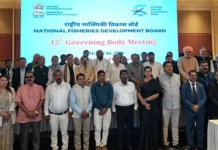Staff Reporter
ITANAGAR, Aug 2: Chief Secretary Naresh Kumar said that the lockdown in the Itanagar capital region (ICR) will be lifted on Monday.
The ICR has seen extended lockdowns with the health department attempting to control the spike in the number of Covid-19 cases. Several parts of Naharlagun have been declared as containment zones.
While the government has decided to ease restrictions from Monday, restrictions in the containment zones will continue to be in place until notified, the CS said during an online press briefing.
Businesses and standalone shops will be allowed to operate from 8 am to 5 pm, but those along the highway will be permitted to function on alternate days, he said, adding that, except for healthcare establishments and pharmacies, Sundays will be “complete lockdown days.”
Government offices will also resume functioning from 3 August.
Although restaurants cannot host patrons, delivery service will be permitted. Public transportation will be allowed to operate with 50 percent occupancy.
The chief secretary also informed that home quarantine would be allowed for returnees and asymptomatic patients “wherever provisions to abide by the standard operating protocols are possible.”
Returnees will have to undergo rapid antigen test at the check gates and should test negative and be asymptomatic to qualify for home quarantine. The government will bear the cost of testing.
Homes must have a separate, well-ventilated room with a separate toilet for the person to be quarantined, and the person must sign an undertaking to undergo five days of compulsory home quarantine which will be monitored by the district administration.
If no symptoms develop within the five-day period, the person may be allowed to proceed with their routine, following the “new normal,” the CS said.
If they do develop symptoms within five days of home quarantine or 28 days of arrival, the person will have to undergo an RT-PCR/TrueNat test.
The administration will decide the matter of home isolation of positive asymptomatic cases on a “case-to-case basis” for certain categories of people, including parents who are positive without any caregiver for the child in the house, children below 14 years of age, lactating mothers with child, pregnant women, and persons with 40 percent or more disability.
For those who meet the requirements for home quarantine, a caregiver should be available within the household to provide fulltime care, Kumar said.
The caregiver will have to have a fingertip pulse oximeter and a thermometer at hand, and keep a proper record of the oxygen saturation level, pulse rate and temperature readings at regular intervals.
“In case the oxygen saturation level falls below 95 percent, or there are any dangerous symptoms and signs, the patient shall be shifted to a hospital,” an official notification read.
Patients who have completed 10 days of home isolation will have to take a rapid antigen test, and will be discharged if the results are negative. Thereafter, the patients will be advised isolation at home for another four days.



